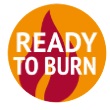We use cookies to make your experience better. To comply with the new e-Privacy directive, we need to ask for your consent to set the cookies. Learn more.
Log types and Burn rates
The burn rate of logs on a wood burning stove can vary greatly depending on several factors, including the size of the logs, the type of wood, and the efficiency of the stove.
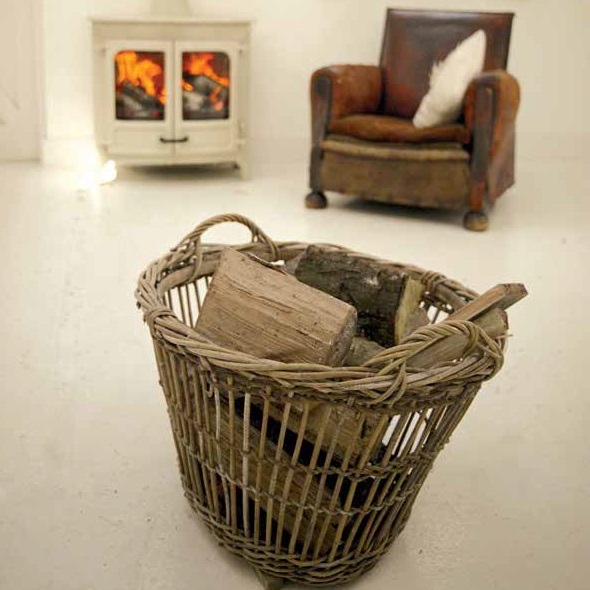
Things to consider;
1. Log Size: The size of the logs that you're using can have a significant impact on the burn rate. In general, larger logs will burn more slowly than smaller logs. You may use a combination of small to medium sized logs however, it is always important to check the recommend log size and load from the stove operating instructions. If the log is too big or if the stove is overloaded then this can cause the stove to overfire which may cause damage. If the logs are too small or not enough logs are loaded, this will result in the stove not achieving its full potential heat output.
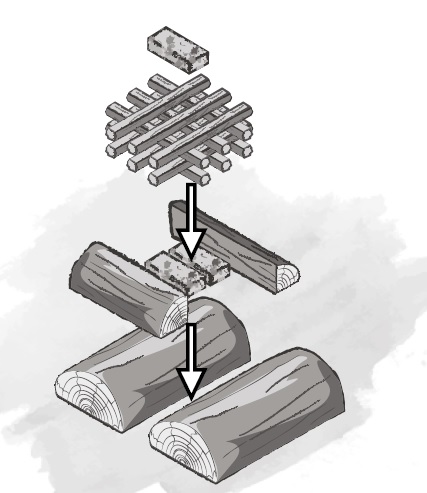
2. Type of Wood: Traditionally hardwoods-Oak, Sycamore, Ash are considered better fuel than softwoods such as Larch, Spruce, pine etc The reason is that hardwood is denser, so an identical sized hardwood log actually contains more carbon, provides more heat and burns longer. A kilogram of softwood can have the same calorific value as a kilogram of hardwood. You will need a greater volume of softwood logs to get the same energy, because they have a lower density but usually are cheaper. If you have room to store more logs you may have a combination of both.
3. Stove Efficiency: The efficiency of the stove is another factor that can impact the burn rate. Eco design wood burning stoves are designed to be highly efficient, which means that they'll use less fuel than traditional stoves and open fires. This, in turn, means that the logs will last longer. When choosing an eco design stove, you can look for one that has a high efficiency rating, as this will help to reduce the amount of fuel you use and lower your carbon footprint. Generally smaller stoves will be more efficient than large heat output stoves. However, it is worth looking at room size and what kw heat output is required for heating the space.
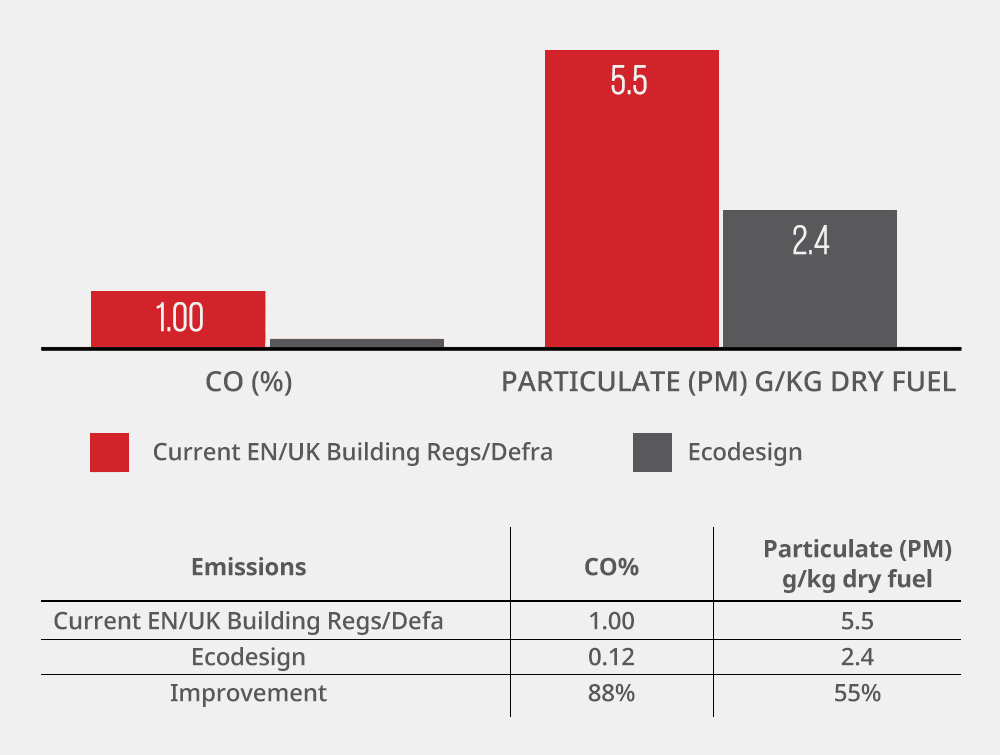
4. Air Flow: The air flow in the stove can also impact the burn rate. If there's not enough air flowing through the stove, the logs may smolder, which can reduce the burn rate but may cause your stove to soot up. If there's too much air, the logs may burn too quickly. To get the best burn rate, it's important to adjust the air vents on your stove so that there's enough air to support the fire, but not so much that the logs are burning too quickly. Some Stoves will have a more user friendly single air control slider which has made it alot easier to control the air flow. Where as a more traditional stove may require a little getting use to. It is always important to follow the operating instructions as each stove design may vary on how the air control works. The Air control may also be put into different positions if it is wood burning or multi-fuel.
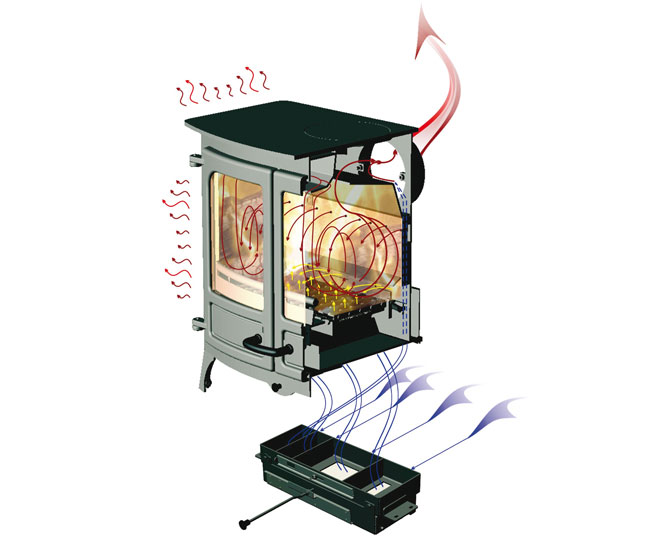
5. Wet or Dry? The most important measure for wood fuel quality is moisture content. A heavier log will no necessarily gove more heat as half the weight of green logs can be water. Wood should be dried or seasoned before burning on your stove. Burning Wet wood will be inefficent and can cause damage to your wood burning stove. The more water in the wood you burn the less heat for your house, because some of the heat released from your fire will have to evaporate the water and will create steam. Burning wet wood with more than 25% moisture content creates corrosive smoke and tar than will damage flue linings and causes chimney fires. Dry wood produces little smoke,low tar deposits and is much more efficient. You can easily test your logs for moisture by using a moisture meter. It can be a good idea to bring in logs from outside a few days before using them, which give your logs a chance to dry out further.
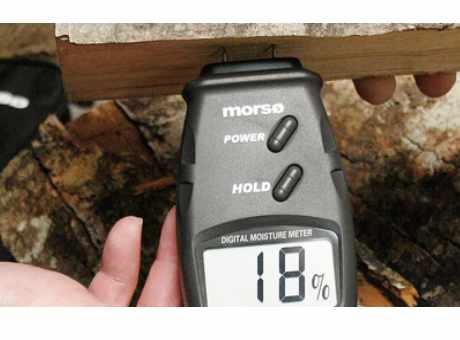
There is a wide range of indoor log storage available
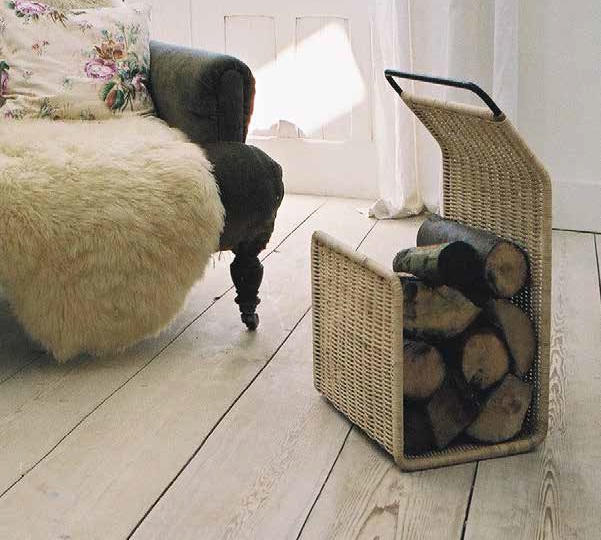
There are many different types of wood that can be used for wood-burning stoves, and each has its own unique characteristics. Here are some of the best types of logs to use:
Oak: Oak is a hardwood that burns slowly and steadily, producing a lot of heat. It also produces very little smoke and sparks.
Ash: Ash is another hardwood that burns well and produces a lot of heat. It is also easy to split and light, making it a popular choice for wood-burning stoves.
Birch: Birch is a fast-burning hardwood that produces a lot of heat and burns cleanly, with very little smoke.
Maple: Maple is a dense hardwood that burns slowly and produces a lot of heat. It also produces very little smoke and sparks.
Cherry: Cherry is a hardwood that burns cleanly and produces a pleasant aroma. It also produces very little smoke and sparks.
Apple: Apple is a hardwood that burns slowly and produces a sweet-smelling smoke. It also produces very little smoke and sparks.
Pine: Pine is a softwood that burns quickly and produces a lot of heat. However, it also produces a lot of smoke and sparks, so it is not recommended for use in wood-burning stoves. It is important to note that the quality of the wood is just as important as the type of wood.
Always use dry, seasoned wood for your wood-burning stove to ensure the best performance and avoid dangerous creosote buildup.
You can get further advice and tips from Woodsure Ready to burn advice hub
https://www.readytoburn.org/consumers/advice-hub/
